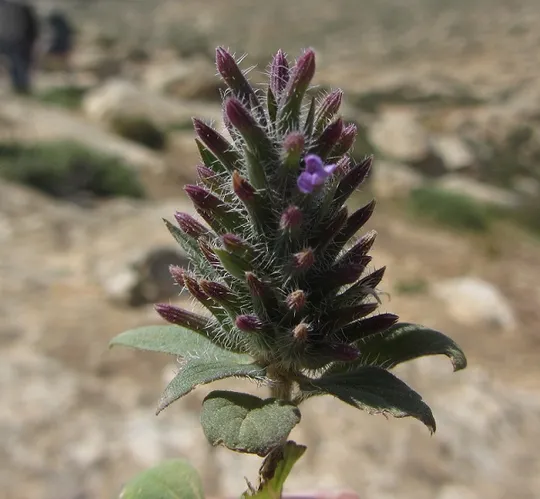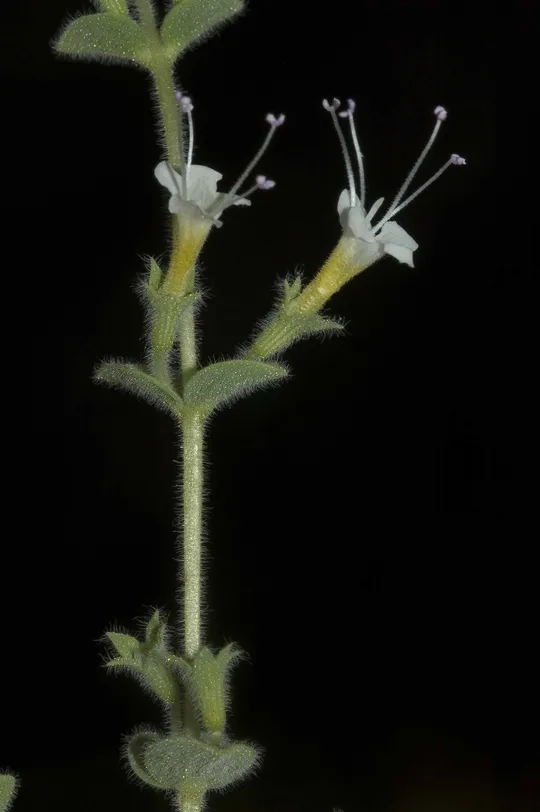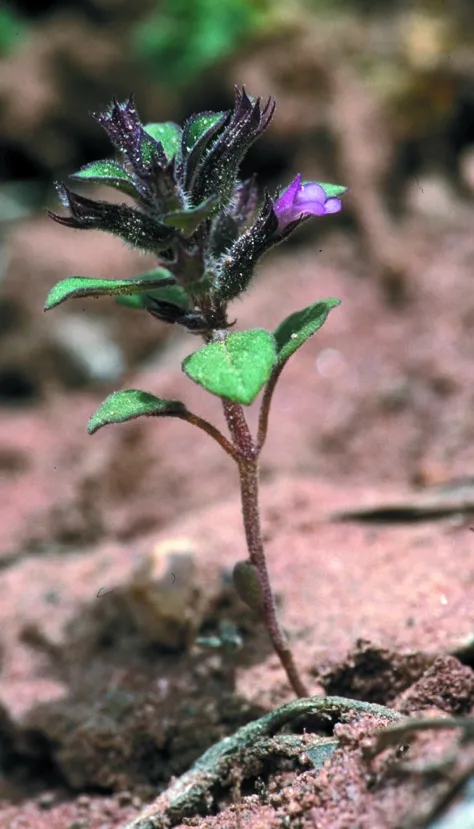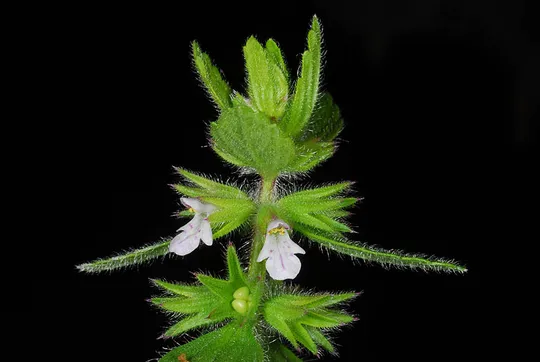French Lavender, Spanish Lavender
Lavandula stoechas
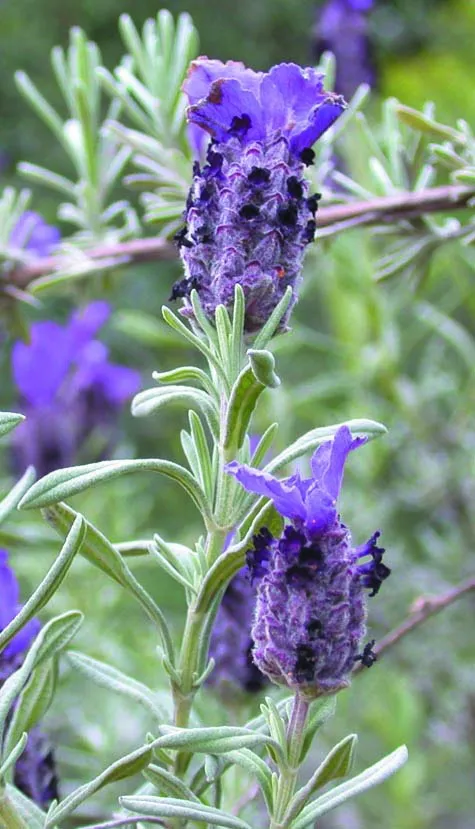
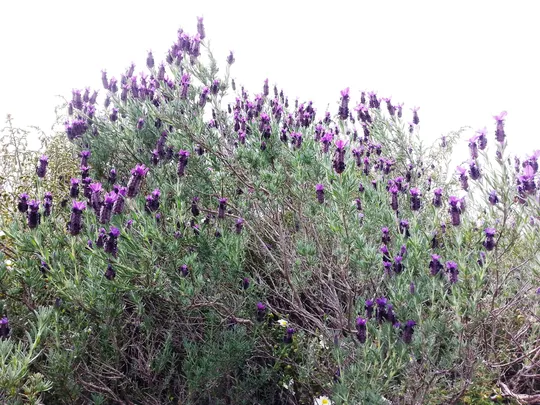
Lavandula stoechas is a grayish fragrant shrub, with narrow elongated rosemary-like leaves. Young leaves sprout and develop in winter, while in summer, leaves are smaller and there is partial shedding. L. stoechas flowers in late winter and spring. Inflorescences are dense branched spikes, 2-3 cm long and 1 cm across, located at the branch tips. At the top bright purple bracts serve as standards to attract pollinating insects. The purple flowers are small (3 mm), slightly two lipped and concealed beneath the standard in vertical rows. Fruit – nutlets concealed between the sepals.
Its past and recent distribution is largely limited to the coastal plain. In the Acre Valley, it grows in the Liman Nature Reserve. Most of its locations are in the Sharon – Pardes Hanna, Giv’at Hayim, Ilanot (East and West), Hadassim, Tel Yitshak, Ramat HaKovesh and Bney Tsion-Harutsim. Other populations grow in urban areas of the Sharon: on the outskirts of Herzliya, on the IMI hills near at Ramat HaSharon, in the Sergeants Grove near Netanya and in the Poleg Forest (Amit Mendelson, personal communication). Up to the 1990s, there were significant populations south of Hadera in Zeta Hill and in Tel-Mond, but these were destroyed as a result of soil quarrying. Other populations previously known from the Sharon at Kfar Yona, Bet Berl, Kfar Batya, Ra’anana and Magdiel are also extinct and were never re-discovered. The main site in the Philistean Plain is in the northern section of the Ness Ziona-Bet Oved ridge. Populations were recorded in the Philistean Plain, but they have become extinct and do not currently exist: in Petach Tikva, Kiryat Ono, Ramat Gan, Rishon LeZion and Rehovot. The general distribution area on the coastal plain has changed very little in recent decades, but the number of locations is greatly reduced.
Additional populations grow at the foot of Mt. Hermon in the Yafori Valley and on Mount Keta.
Calcium carbonate-poor sandy Hamra or Husmas soils on the coastal plain, sandstone at the foot of the Hermon. Mostly in garrigues together with Cistus, Calicotome villosa and Thymelea hirsuta.
Lavandula has some 30 species, mostly growing in the Mediterranean, the Irano-Turanian and the Saharo-Arabian regions. In addition to Lavandula stoechas, two additional species grow in desert areas in Israel: L. coronopifolia and L. pubescens. The inflorescence of these species is not crowned by bracts (standard). Lavandula dentata is an ornamental cultivated in gardens (also found in nature in Edom) that has a modest standard at the top of its flowers; L. angustifolia, which is the lavender used in perfumes, disinfectants, spices and in medicine is also cultivated in gardens.
• Loss of habitat to agriculture and construction is the main reason for population decline. Populations growing outside reserves will probably become extinct.
• Lavandula stoechas populations are usually found in well-defined patches and the distance between individuals is usually only a few meters. The sites on the coastal plain are isolated from each other, sometimes by only a few kilometers and at other times by dozens of kilometers.
• The populations are generally small with only few individuals, from a few dozen to a few hundred. Dense Cistus and Calicotome garrigues of cause mortality, while fires and the artificial opening of garrigues encourage development of Lavandula stoechas. Surprisingly in JNF planted forests the populations develop well.
• The species is rare in Israel and restricted to specific habitats, but in the Mediterranean Basin, it is a common species, not endangered, with many varieties that grow in diverse soils.
• Protected in the Liman, Hadassim, Tel Yitshak and Bney Tsion nature reserves.
Additional wild areas on the coastal plain that have large populations of Lavandula stoechas such as in Giv’at Haim, North Bney Tsion, IMI hills and the Bet Oved ridge should be protected. The population dynamics of L. stoechas in reserves should be monitored in the context of the developing Cistus and Calicotome garrigues .If Lavandula responds badly, Calicotome and Cistus should be thinned. The awareness of the JNF foresters of the species in planted forests should be enhanced.
Mediterranean Basin, on various types of rocks and soils.
Lavandula stoechas is not globally threatened, but in Israel, it is endangered due to the reduction of its natural habitats on the coastal plain because of rapid development. Populations in Israel are peripheral and have an affinity for a specific habitat with low calcium-carbonate soils. The population apparently renews spontaneously from seed. For the populations to be sustainable existing populations have to be maintained, more nature reserves should be declared, existing populations require monitoring and steps should be taken to prevent the negative effect of crowded garrigues on the plants.
פולק, ג. 1983. צמחים נדירים בארץ / אזוביון דגול. רתם 9, 46-53.
Pollak, G. 1985. French Lavender - A rare plant in Israel. Israel Land and Nature 10, 57-59.
Pollak, G., & Orshan, G. (1989). Annual cycle of single species: Lavandula stoechas L. In G. Orshan (ed.), Plant Pheno- morphological Studies in Mediterranean type ecosystems. Kluwer Academic Publishers:
Dordrecht, Netherlands. p.124-125.
Current Occupancy Map
| 1000 squre meter pixel | 5000 squre meter pixel | 10000 squre meter pixel | |
|---|---|---|---|
| number of observations | 0 | 0 | 0 |
| in total pixels | 0 | 0 | 0 |
| Family | Lamiaceae |
| Classification | On the endangered species list |
| Ecosystem | Coastal area |
| Chorotype | Mediterranean |
| Conservation Site | Bney Tsion and Liman Nature Reserves |
| Rarity |
1
2
6
|
|---|---|
| Vulnerability |
0
3
4
|
| Attractiveness |
0
2
4
|
| Endemism |
0
0
4
|
| Red number |
1
4.2
10
|
| Peripherality | N |
| IUCN category | DD EW EX LC CR EN VU NT |
| Threat Definition according to the red book | Endangered |
 Based on:
Based on:
